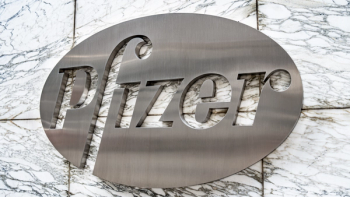Key Takeaways
- FDA updates Amyvid label to guide Alzheimer disease (AD) therapy decisions: The revised label supports both visual and quantitative assessment of amyloid plaques for improved diagnostic accuracy and treatment selection.
- Amyvid PET imaging improves Alzheimer diagnosis: Clinical trial and real-world data show Amyvid’s effectiveness in identifying β-amyloid plaques, helping differentiate AD from other cognitive conditions.
- AD burden continues to grow: Over seven million Americans live with AD, with costs projected to reach $1 trillion by 2050—underscoring the need for early and accurate diagnosis.
The FDA has approved an updated label for Eli Lilly’s Amyvid (florbetapir F 18 injection), reinforcing its role in diagnosing Alzheimer disease (AD). The revision clarifies that Amyvid may be used to evaluate amyloid plaque levels in individuals with cognitive impairment, including those being considered for amyloid-targeting therapies. Amyvid is a radiopharmaceutical used with PET imaging to estimate brain amyloid burden.1
How Does the Updated Amyvid Label Support Alzheimer’s Diagnosis and Treatment?
“Nearly 80% of Americans would prefer to know if they have an Alzheimer’s diagnosis before their memory and thinking symptoms disrupt daily life3, highlighting the importance of advanced diagnostic tools like amyloid PET and blood biomarker testing,” said Mark Mintun, MD, group VP, neuroscience research & development, Lilly, in a press release.
Expanded Use for Amyloid PET Imaging in Clinical Evaluation
The label now supports both visual and quantitative assessment of amyloid plaques. It also notes that amyloid PET imaging has been used in clinical trials to track changes in plaque burden as part of amyloid-targeting therapy evaluation. In patients not previously treated with such therapies, a negative scan suggests little or no plaque buildup, making AD less likely. A positive scan reflects moderate to frequent plaque presence, more consistent with an AD diagnosis.1
Safety Profile and Clinical Study Validation
Common adverse events associated with Amyvid include headache, muscle or joint pain, higher blood pressure, nausea, tiredness, and injection site reactions.2
According to a 2012 study published in the New England Journal of Medicine, Amyvid PET imaging improved the diagnosis of cognitive impairment by enabling detection of β-amyloid neuritic plaques. The study findings helped clarify how scan results can inform diagnostic decisions, in which sparse or no plaques lower the likelihood of AD, and moderate to frequent plaque levels increase diagnostic confidence or point to related conditions.
Regulatory Background and Pivotal Trial Data
Amyvid was first approved in 2012 based on results from two clinical trials (NCT01447719 and NCT01550549). NCT01447719 included 59 patients who underwent Amyvid scans followed by autopsy. The scan sensitivity for detecting moderate to frequent β-amyloid neuritic plaques was 92%, and the specificity was 95%. NCT01550549 evaluated the reliability of scan interpretations in a broader, more representative population, including non-terminal patients with AD, mild cognitive impairment, and cognitively normal individuals. The median sensitivity for detecting moderate to frequent plaques was 82%, with a median specificity of 95%.3
The Growing Burden of Alzheimer Disease in the United States
According to the Alzheimer’s Association, over seven million people are currently living with AD in the United States. Around one in nine people aged 65 years and older have AD. Unless a breakthrough medical treatment is developed, around 12.7 million people in the United States will be estimated to have AD by 2050. In women aged 45 years, the lifetime risk for AD is one in five, while it is one in 10 for men of the same age. Around 74% of AD patients in the United States are over 75 years of age.
Close to 12 million people in the United States provide unpaid care for people with AD or other forms of dementia. In 2024, this accounted for over 19 billion hours of care, with an approximate value of $413 billion. By the end of 2025, it is projected that healthcare costs associated with AD will reach $384 billion and close to $1 trillion by 2050.4
“The modernization of Amyvid’s label is a significant step in advancing Alzheimer’s care, enabling physicians to help patients make informed decisions, being evaluated for or to aid in the selection of patients who are indicated for amyloid-targeting therapy,” concluded Mintun, in the press release.
References
- FDA approves updated label for Lilly’s Amyvid (florbetapir F 18 injection) to support diagnosis of Alzheimer’s disease in patients. Lilly. June 25, 2025. Accessed June 26, 2025. https://investor.lilly.com/news-releases/news-release-details/fda-approves-updated-label-lillys-amyvid-florbetapir-f-18
- AMYVID BETA-AMYLOID SCAN. Lilly. Accessed June 26, 2025. https://amyvid.lilly.com/
- Brain amyloid imaging--FDA approval of florbetapir F18 injection. PubMed. Accessed June 26, 2025. https://pubmed.ncbi.nlm.nih.gov/22931256/
- Alzheimer's Disease Facts and Figures. Alzheimer’s Association. Accessed June 26, 2025. https://www.alz.org/alzheimers-dementia/facts-figures#:~:text=navigate%20dementia%20care.-,Prevalence,other%20dementias%20as%20older%20Whites.





